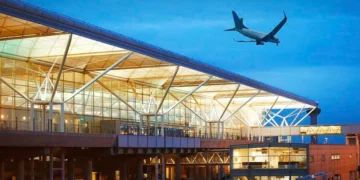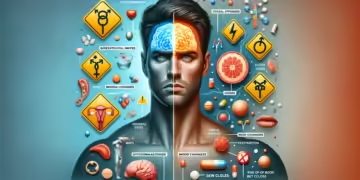Introduction
It was a crisp morning in Gloucester City, and the aroma of freshly brewed coffee wafted through the air as residents strolled along the historic streets. Among them was Emily, a lifelong resident who had witnessed the city’s transformation over the decades. Gloucester City’s journey has been nothing short of remarkable, from its humble beginnings as a bustling port to the vibrant cultural hub it is today. As Emily sipped her coffee at a local café, she couldn’t help but reflect on the changes that had shaped her beloved city. The rise in tourism, the revitalization of the waterfront, and the thriving arts scene were just a few factors contributing to the city’s resurgence. Once known for its maritime heritage, Gloucester City was now a beacon of progress and innovation.
Historical Significance and Modern Developments
Gloucester City, located in New Jersey, boasts a rich history dating back to its founding in 1623. Known for its strategic location along the Delaware River, the city played a pivotal role in America’s maritime industry. Today, Gloucester City honors its past while embracing modernity through various development projects to boost the local economy and enhance residents’ quality of life.
Economic Growth and Development
Over the past decade, Gloucester City news has experienced significant economic growth. According to the U.S. Census Bureau, the city’s population grew by 2.4% between 2010 and 2020, reflecting a steady influx of new residents drawn by the city’s improved infrastructure and job opportunities. The redevelopment of the waterfront area has been a critical driver of this growth. The Gloucester City Waterfront Development Plan, initiated in 2015, has transformed the once-neglected riverfront into a vibrant space featuring parks, restaurants, and entertainment venues. This redevelopment has attracted tourists and spurred local businesses, creating hundreds of new jobs.
The Cultural Renaissance
Gloucester City’s cultural scene has flourished in recent years thanks to the efforts of local artists and organizations. The city’s annual Riverfront Arts and Music Festival, launched in 2018, has quickly become a staple event, drawing thousands of visitors annually. According to the Gloucester City Arts Council, attendance at the festival has increased by 30% annually since its inception, highlighting the growing interest in the city’s cultural offerings.
The Gloucester City Library has also played a crucial role in the cultural renaissance. With over 50,000 visitors in 2023, the library has become a community hub, offering a range of programs from art exhibits to educational workshops.
Education and Community Engagement
Investments in education have further cemented Gloucester City’s reputation as a great place to live and raise a family. The Gloucester City School District has seen a 10% increase in graduation rates over the past five years, partly thanks to new educational initiatives and partnerships with local businesses. The district’s focus on STEM (Science, Technology, Engineering, and Mathematics) education has equipped students with the skills needed to thrive in today’s competitive job market.
Community engagement is another cornerstone of Gloucester City’s resurgence. The city’s numerous volunteer organizations and neighborhood associations have fostered a strong sense of community, ensuring that residents are actively involved in the city’s development. Initiatives like the Gloucester City Clean-Up Day, which saw participation from over 500 residents in 2023, exemplify the community’s commitment to maintaining a clean and welcoming environment.
Challenges and Future Prospects
Despite its many successes, Gloucester City faces challenges typical of growing urban areas. Traffic congestion and affordable housing are two pressing issues that city planners are currently addressing. According to a 2023 Gloucester City Planning Commission report, traffic congestion has increased by 15% over the past five years, prompting the city to invest in infrastructure improvements and public transportation projects.
Affordable housing remains a critical concern, especially for low-income families. In response, the city has launched several affordable housing projects to provide quality homes for all residents. These efforts include the Gloucester City Affordable Housing Initiative, which aims to build 200 new affordable housing units by 2025.
Conclusion
Gloucester City’s journey from a historic maritime town to a modern cultural and economic hub is a testament to its residents’ and leaders’ resilience and vision. As Emily finished her coffee and walked along the revitalized waterfront, she felt a sense of pride in her city’s achievements. Gloucester City’s blend of tradition and modernity and its strong sense of community promises a bright future for all who call it home. With ongoing developments and a commitment to addressing challenges, Gloucester City is well-positioned to continue its upward trajectory, ensuring it remains a vibrant and welcoming place for future generations.































